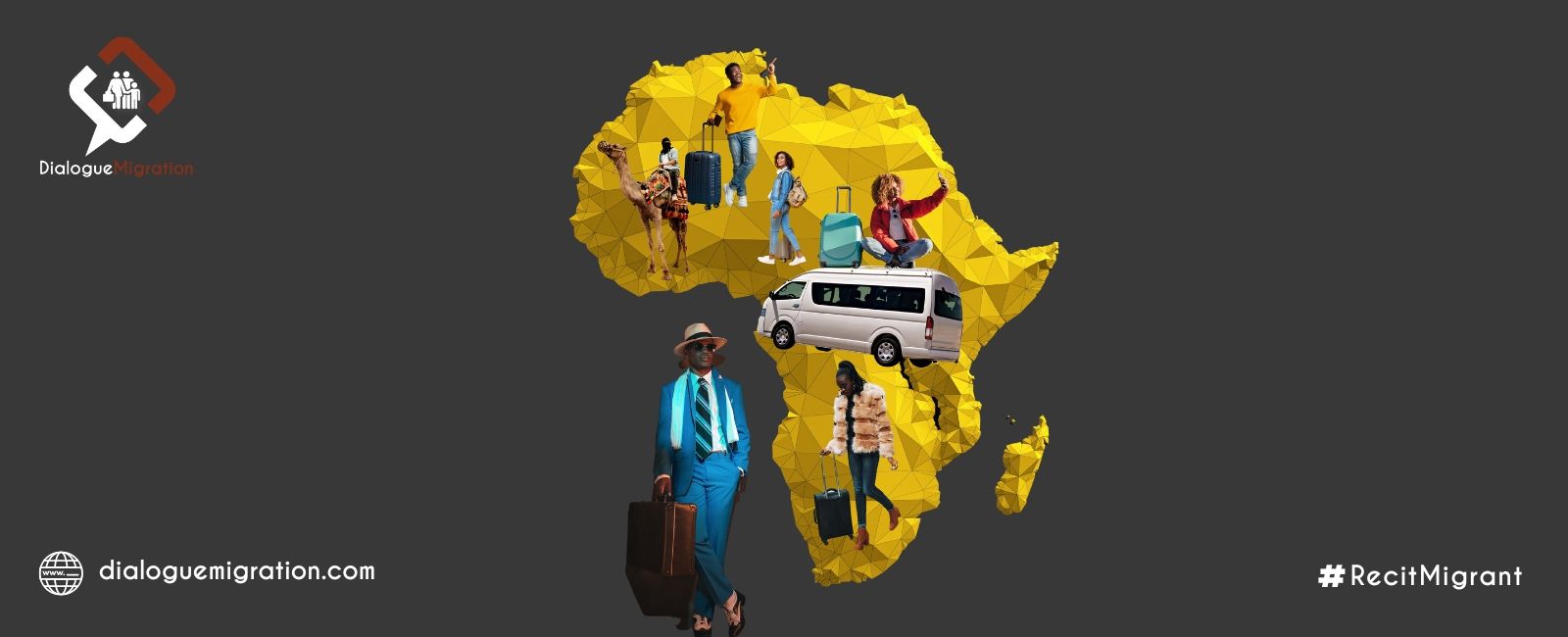

The flow of information on migration suggests that Africans are moving more outside the African continent than within it. What is it really?
According to the 2019 UN Migration Report, between 2011 and 2017, more than half of African-born migrants lived in another African country (52.7%). The other half resides between Europe (26.3%), Asia (11.4%), North America (8.0%) and the rest of the world (1.6%).
The data in the UN study overlaps with those published by the World Organization for Migration (IOM) published in 2021. “I won’t be able to give you a precise figure, but the overall estimate is that migration within Africa is more important than migration from Africa to other continents,” Robert Kotchani, West Africa regional representative of the Office of the United Nations High Commissioner for Human Rights (OHCHR), told Africtivistes.
According to Mr. Kotchani, the analysis of these intercontinental migratory flows at the sub-regional level shows that it was easier to move within the West African region.
While it is “difficult to find consensus data that reflects the true state of migration,” the OHCHR Regional Representative says that based on data released by IOM’s Digital Hubs in January 2021, “in the last decade, Africa has a cumulative number of 42 million migrants (intracontinental and extracontinental).”
Mr. Kotchani points out that “70% of migratory movements in West Africa take place within the West African region itself”. The OHCHR expert explains this particularity of the West African subregion by the existence of a treaty on the free movement of persons between member state countries of the Economic Community of West African States (ECOWAS), materialized by the introduction of a community identification card. “When you are Senegalese and you have the digitized ECOWAS identity card, you can circulate in all the countries of the sub-region. While until recently, a Cameroonian who had to go to Gabon, had to pay a visa,” says Mr. Kotchani.
According to figures compiled by a study published on the United Nations website in 2020, migration levels in West Africa remain high today. The total number of migrants has more than doubled in the last 30 years. Most West African migrants move to a neighbouring country. However, travel to other regions has increased.
In mid-2020, 64% of West African migrants were living in another country in the region, up from 80% in mid-1990. The highest levels of intra-regional migration come from low-income or landlocked countries, with the exception of Côte d’Ivoire, according to the UN report.
The same source adds that more than 97% of migrants from Burkina Faso live in another West African country, as do more than 90% of migrants from Niger and more than 75% from Benin, Côte d’Ivoire, Mali, and Togo.
Migrants from the most prosperous coastal areas, including Nigeria, Ghana and Senegal, are increasingly living outside the region, according to the same source.
People circulate in West Africa!
West Africa hosted 7.6 million migrants in mid-2020, according to IOM’s Migration Data Portal. According to this source, Côte d’Ivoire continues to receive the most migrants, both in absolute numbers and as a percentage of its population. This country hosts more than two million five hundred thousand migrants according to the 2020 UN report on migration in Africa published on the IOM website.
Nigeria comes in second place with more than one million three hundred thousand migrants welcomed in 2020. Burkina Faso completes the podium with nearly 724,000 migrants. Togo, Senegal and Gambia occupy the last three places in the top 10 with less than 280,000 migrants welcomed each.
In terms of percentage of the populations of each host country, The Gambia with 8.8%, is in second place behind Côte d’Ivoire with 9.7%, according to UN DESA, 2020. Burkina third is at 3.5% ahead of Togo (3.4%), Benin (3.3%), Mali (2.4%) and Senegal (1.6%).
A false perception of extracontinental migration of Africans
The treatment of migration issues regarding the African continent in the Western media seems to establish that Africans are the most involved in this natural phenomenon. However, most of the world’s migrants are not African.
Africa accounts for 14 per cent of the world’s migrant population, compared to 41 per cent of Asians and 24 per cent of Europeans, according to IOM’s 2019 Africa Migration Report, conducted in collaboration with other partners.
According to researchers from the Institute for Research and Development (IRD), in an article published on 31 January 2022, of the 8.4 million migrants in West Africa, less than 10% of them are heading for Europe.
The place occupied by irregular migration in the media coverage of migration issues often responds to a sensationalism that obstructs the reality on the ground. The aforementioned report shows that most African migrants do not cross the oceans, but rather the land borders of Africa. According to the same source, 94% of African migration across the oceans has a regular form and most of the migrants in the world are not African.
Several reports on migration in Africa have focused on irregular migration, highlighting its horrific and tragic aspect. The tragedies of Ceuta and Melila in 2005 and 2022, the tragedy of Lampedusa in 2013 and the multiple tragedies in the Mediterranean focus more media attention. Overshadowing another narrative about contemporary migration in Africa that largely focuses on intra-African migration, “as evidenced by the endless daily border crossings by traders, many of whom are women selling in markets who are simply trying to make a living,” says the Africa Migration Report.
Available data on migration from African countries to the European Union and reported in recent years show that inflows are essentially regular. According to the 2019 United Nations Migration Report, between 2011 and 2017, regular entries into the European Union from most countries in North and West Africa outnumbered irregular entries by sea into Italy.




